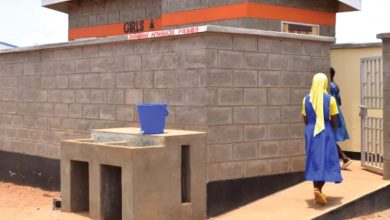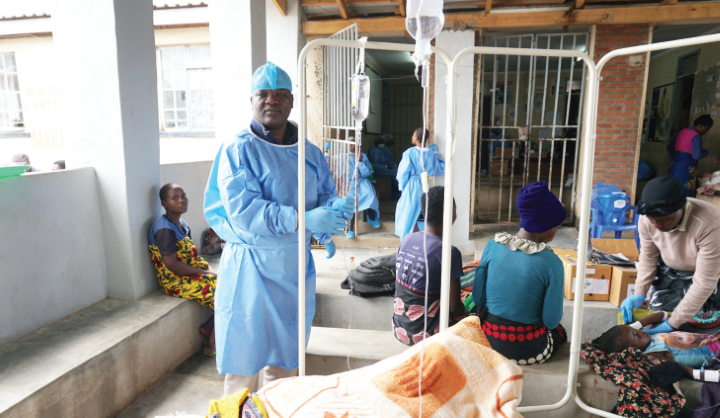When hunger hampers breastfeeding
For Aisha Raphael (21) of Mwanandi Village, Traditional Authority (T/A) Kapichi in Thyolo, the pain she endured in the maternal ward when giving birth to her first child in March overflowed into the pain of feeding her daughter.
Rarely do you hear of mothers with babies no older than six months complaining of the hardships of breastfeeding. Nutritionists say breast milk contains minerals, vitamins and nutrients that can keep a baby healthy for at least six months without any supplementary foods.
This makes Raphael’s issue a case. Born on March 1, 2015, the baby girl is just four months old.
Seated at the veranda of her grass-thatched house in Khonjeni with the baby on her laps, signs of pain are vivid on her face. She is trying to breastfeed her baby. At first sight, you would think the baby is just playing, putting the left breast into her mouth then letting it out seconds later.
The breast is completely dry and the daughter begins to protest. She breaks into tears, the sound of her cry is barely audible, as she has been crying of hunger for hours on end. The mother, too, is helpless. She has no control over her breasts. The only thing she can do is to make sure she is eating balanced meals to ensure she is healthy and is able to produce enough milk.
“I cannot feed my baby,” she laments. “Milk production has declined because I am not taking enough food. For two days now, I have not taken any strong meal apart from some fruits such as pawpaws and now the breasts are completely dry. I fear for my daughter’s life.”
Regina Basikolo, a midwife at MoyoWathu Private Clinic in Lilongwe, says there is a direct link between a healthy and well-fed mother and breastfeeding.
“Milk production depends on what the mother eats. Breastfeeding mothers have to take balanced meals and eat frequently. Poor diet leads to production of milk without some nutrients. This can make the baby malnourished,” says Basikolo.
Civil Society Organisations Nutrition Alliance Malawi (Csona) reveals that 50 percent of under-five children deaths are caused by malnutrition.
A World Food Programme (WFP) report titled The Cost of Hunger in Malawi says four percent of under-five children are malnourished.
With the poverty levels so high in the country, Raphael is not alone. Following the January floods, there is looming hunger.
Civil Society Agriculture Network (CisaNet) says the floods which hit 15 of the 28 districts have dropped harvest by 30 to 40 percent. The Malawi Vulnerability Assessment Committee (Mvac) report estimates that 2.8 million Malawians, about 20 percent of the population, face starvation.
Divorced Raphael should be among the people already starving. Her piece of land, which produces seven bags of maize, gave her only a bag this harvest season. She says the maize is already consumed.
Like most farmers, when maize has not done well, the hope is in other crops such as cassava, sweet potatoes and pigeon peas, which she rotates with maize.
There is a different story this year. The other crops have not done well. A visit to her farm exposed poor yield for cassava. Sweet potatoes are the worst hit. She uprooted three, but got literally nothing apart from long and thin roots.
Raphael says she does not know how she will survive. Apart from her child, she also supports four children left by her deceased sister. Her aunt in the 70’s too depends on her. Due to poverty, none of the children is in school. Raphael says she cannot afford feeding, buying school uniform, notebooks and pay for development fund which pupils pay for school projects.
But how does it go in other years?
She is privileged to live close to Kumadzi Macadamia Estate where most people get temporary seasonal jobs. She says if it were not for the child, she could have worked between January and June.
“There is no one I can trust my baby with before she reaches seven months. Unfortunately, there will be no work then since it is off-season,” laments Raphael.
During our visit, the estate had just signed off contracts with about three quarters of its employees.
“I rely on piecework in people’s gardens, but this year they are scarce. I don’t know what will happen to us,” says Raphael.
The Nation visited a number of houses in the area and it was the same story. Chrissy Yasin, Maureen Mawaya, Dick Jackson and AgnessMaulana say they mostly do not know where the next meal will come from. Endangered are babies breast-feeding.
With scarcity of maize, the price of the staple food has sky-rocketed. While those in Blantyre, about 70 kilometers away are buying maize between K120 and K150 per kilogramme, in Khonjeni people are coughing between K130 and K170 per kilo at Makoka Trading Centre. To buy at cheaper rates, one has to go to Makapwa trading centre about 15 kilometres away where maize is selling at between K110 and K150 per kilogramme.
This was expected. Feminine Early Warning System (Fewsnet) warned that due to minimum maize stocks, pegged at 60 000 tonnes, maize prices will rise by 10 percent. Government has promised to cushion the shortage by importing 100 000 tonnes of maize from Tanzania and Zambia and it insists that no one will die of hunger.
Although these are encouraging reports, it is high time Malawi rooted out poverty once and for all. Agriculture experts argue that the country has been on course on food security, but there has been negligence by top officials to achieve consistency.
The National Statistical Office (NSO) third Integrated Household Survey (IHS3) released in 2011, says an estimated 50.7 percent of Malawi’s population is impoverished, down from 52.4 percent in 2005.





